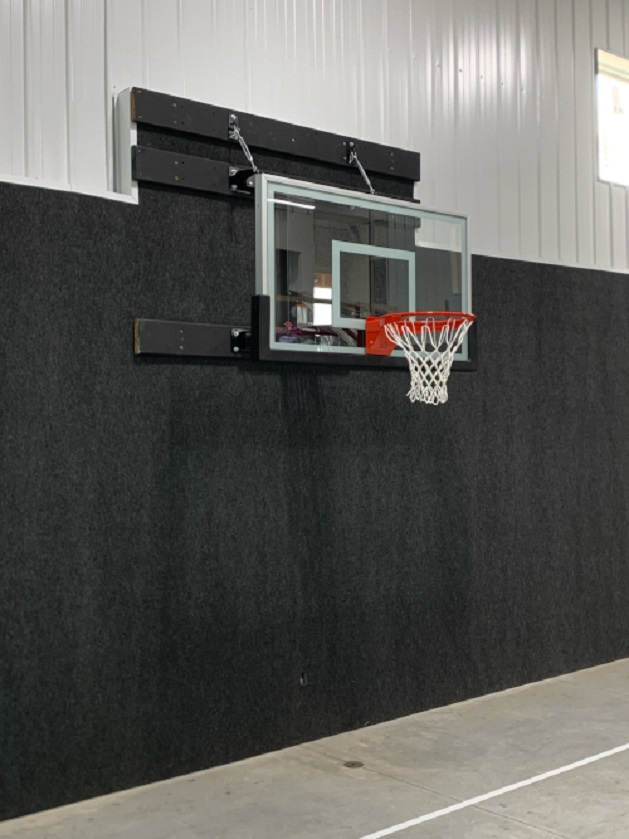Want to hone your jumper, amuse the kids, or decide once and for all who the neighborhood’s greatest player is? Sinking a perfect shot on your very own backyard basketball hoop is a pretty great feeling, even when not followed by roaring applause. Just you, the ball, and a great hoop. But what is the right hoop for you? With so many to pick from, how do you choose? Let’s break down everything you need to know about basketball hoops, minus the hype.
What Are the Different Types of Basketball Hoops?
The range of basketball hoops for sale is quite large, from ones that offer professional performance suitable for school gyms, community venues, and regional competitions to more affordable home alternatives. The question is – do you need a pro-grade basketball hoop or something more suitable for younger players?
Portable: The Multi-Faceted Friend
What they are: Portable hoops are considered the most versatile option. These units typically come with a wheeled base that you fill with water or sand, a pole (often adjustable), and a backboard or rim system. More professional models offer a strong, durable, and safe anchoring system with a spring-assisted lifting mechanism for smooth raising and lowering.
Who they’re for: If you rent, don’t have a lot of room, or just like to change things up, portable hoops are the solution. They’re perfect for casual players who might need to move their equipment for one reason or another.
The reality check: Portable hoops are a very convenient option, with top-quality units offering better performance and more stability. However, some models may be shaky during more aggressive games. And, no, filling water in the base with concrete is not a “life hack” – it’s a way to destroy your hoop and back when you inevitably need to relocate it.

In-Ground Hoops: The Permanent Commitment
What they are: The basketball version of putting down roots. In-ground systems are all about digging a hole, pouring concrete, and connecting a pole that’s staying permanently.
Who they’re for: Homeowners who have already decided where they’d like their basketball activity to happen for years and years to come. These are ideal for serious ballers who want maximum stability and that real court feel.
The reality check: Once it’s in, it’s IN. Installation takes some effort, and if you’re moving homes, you’re not taking it with you. But stability and performance can’t be beat, especially for those rough-around-the-edges dunkers who’d take down a portable system in the first quarter.
Bolt-Down Systems: The Middle Ground
What they are: These hoops mount directly into an existing concrete pad, using heavy-duty bolts and anchors. They combine the stability of in-ground systems with a little flexibility.
Who they’re for: Those who want more stability than portables can offer, but who do not want or are not willing to go as far as installing an in-ground system in case they need to remove it in the future.
The reality check: You’ll need a solid concrete floor to start with. They’re steadier than portables but not exactly as rock-steady as in-ground systems.
Wall-Mount Hoops: The Space-Savers
What they are: Like the name suggests, this type of basketball hoop hooks onto a wall or building side, so there is no support pole whatsoever.
Who they’re for: Individuals with limited space but a solid wall (house side, garage). Ideal for half-court use when you just don’t have enough room for a full installation.
The reality check: Setup needs some know-how to make it safe, including locating wall studs and heavy-duty mounting hardware. And depending on where you hang it, you might create some difficult (and perhaps unsafe) playing conditions. Nothing tests friendship like chasing a rebound into flower beds or parked cars.
Ceiling-Mount Systems: The Garage Specials
What they are: Similar to wall-mounts but mounted on your garage or gym ceiling, often with folding mechanisms to hoist them when not in use.
Who they’re for: Indoor players with restricted space who want to keep floor room when they aren’t playing.
Reality check: These require serious ceiling load capacity and professional installation in almost all cases. They provide stability and height adjustment but may need more maintenance.

Selecting Based on Your Game
- For the weekend family player: A mid-range portable model with height adjustment will suffice. Look for one that has at least a 44″ backboard and a simple-to-operate height adjustment system.
- For the competitive player: An in-ground model with at least a 54″ tempered glass backboard and breakaway rim is the way to go. Your shots will love the consistent rebound.
- For the dunker: Stability above all. In-ground is the ticket, with a breakaway rim of heavy-duty construction that can absorb your highlight-reel finishes without snapping back and slugging you in the face.
- For the young player: Height adjustability is essential. Kids need to develop proper form, and they can’t do that if they’re throwing the ball up at a 10-foot rim. Systems that go as low as 7.5 feet will grow with them.
The Bottom Line
Your top-of-the-line hoop is the one you’re going to use. Consider your space, your budget, your level of commitment, and your seriousness about the game. And don’t forget – even the most advanced hoop in the universe isn’t going to improve your jump shot. Only practice will (though you can still put the fault on the backboard).


